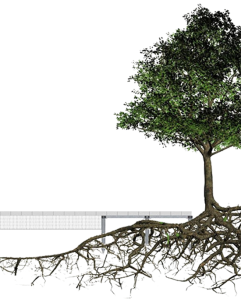How Human Activities can protect soil?
 Planting ground covers on inclines or exposed ranges controls disintegration and overflow since plant establishes hold the dirt input, and the leaves shield the dirt from the effect of raindrops, diminishing Soil Compaction Prevention Company Winchester, and enhancing the speed with which water drenches into the ground. Ground spreads can deliver appealing examples with varieties in stature, surface, and shading. They additionally moderate soil dampness; decrease upkeep in limited or odd-molded territories where cutting, edging, and watering may be troublesome; decrease warm, glare, commotion, and clean; and piece pedestrian activity without obstructing the view.
Planting ground covers on inclines or exposed ranges controls disintegration and overflow since plant establishes hold the dirt input, and the leaves shield the dirt from the effect of raindrops, diminishing Soil Compaction Prevention Company Winchester, and enhancing the speed with which water drenches into the ground. Ground spreads can deliver appealing examples with varieties in stature, surface, and shading. They additionally moderate soil dampness; decrease upkeep in limited or odd-molded territories where cutting, edging, and watering may be troublesome; decrease warm, glare, commotion, and clean; and piece pedestrian activity without obstructing the view.
Soil disintegration happens when soil particles are carted away by water or wind and kept elsewhere, for example, into a stream or at the base of a sound. Frequently soil particles are conveyed by overflow, water that does not splash into the ground, but rather streams over the surface and hurries to another region –, for example, into storm drains, streams, or lakes.
In expansion to soil silt, spillover can wash manure and different poisons alongside it. Silt makes up a large portion of the poison conveyed by overflow, in any case, and the greater part of the phosphate and pesticides entering Virginia's waters are appended to these turf particles. In this way, controlling disintegration will make a huge commitment to the control of water contamination. Overflow entering lakes and stream, notwithstanding conveying contaminations, is water that is required to drench through the dirt to resupply our groundwater.Reducing disintegration and overflow is critical to ensure both our dirt and our water supplies. Disintegration and spillover in the home scene likewise make unattractive exposed zones and store mud and tidy on carports and walkways that is then followed into the house.
Disintegration starts when rain or water system water releases soil particles. At the point when there is a lot of water to drench into the dirt, it fills surface dejections and starts to stream. With enough speed, this surface overflow diverts the extricated soil. Overflow from rooftops and cleared territories can add to disintegration by coordinating a lot of water in a brief span period to adjacent territories that can't assimilate it rapidly enough.
Landscaping not just increases value of your property, additionally controls disintegration by diminishing the sum and speed of overflow. Ground spreads are one of the best disintegration controls and incorporate any plant material that makes the progress surface so the dirt can't be seen from above and slam does not strike specifically upon it. Turfgrass is one vital kind of ground cover, yet numerous other low-becoming herbaceous and woody plants function admirably and, once settled, require less compost, pesticide, and other support than turf.
Soak slants can be effortlessly disintegrated and, regardless of the possibility that disintegration is controlled, may permit water to gather in undesirable zones, for example, close house establishments. There are numerous approaches to lessen disintegration and spillover, and control the heading of seepage.
Plant an overwhelming ground cover to lessen disintegration and increment water entrance into the grass on the incline. Turf is regularly unfeasible here in light of the fact that cutting is troublesome what's more, unsafe on soak territory.

